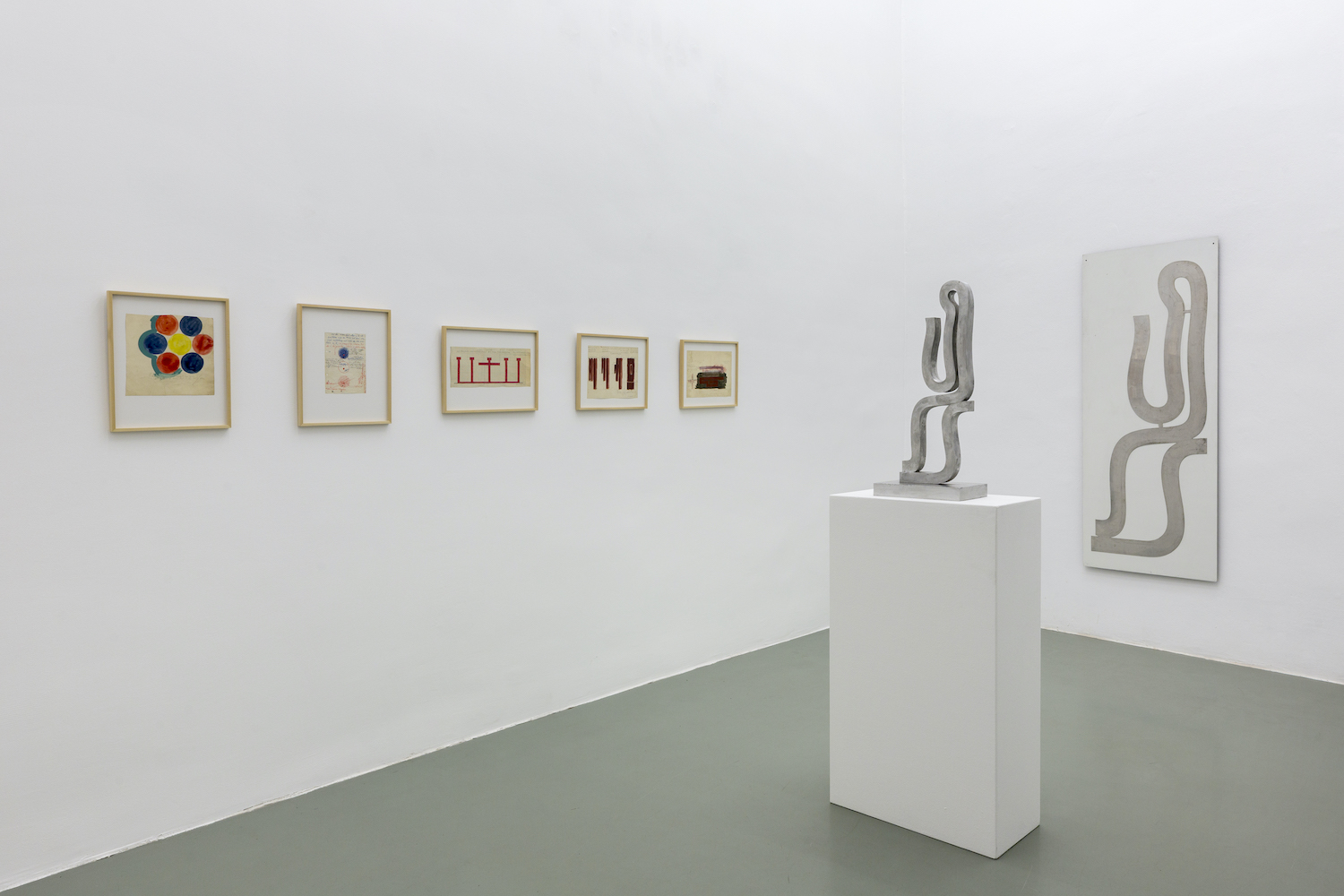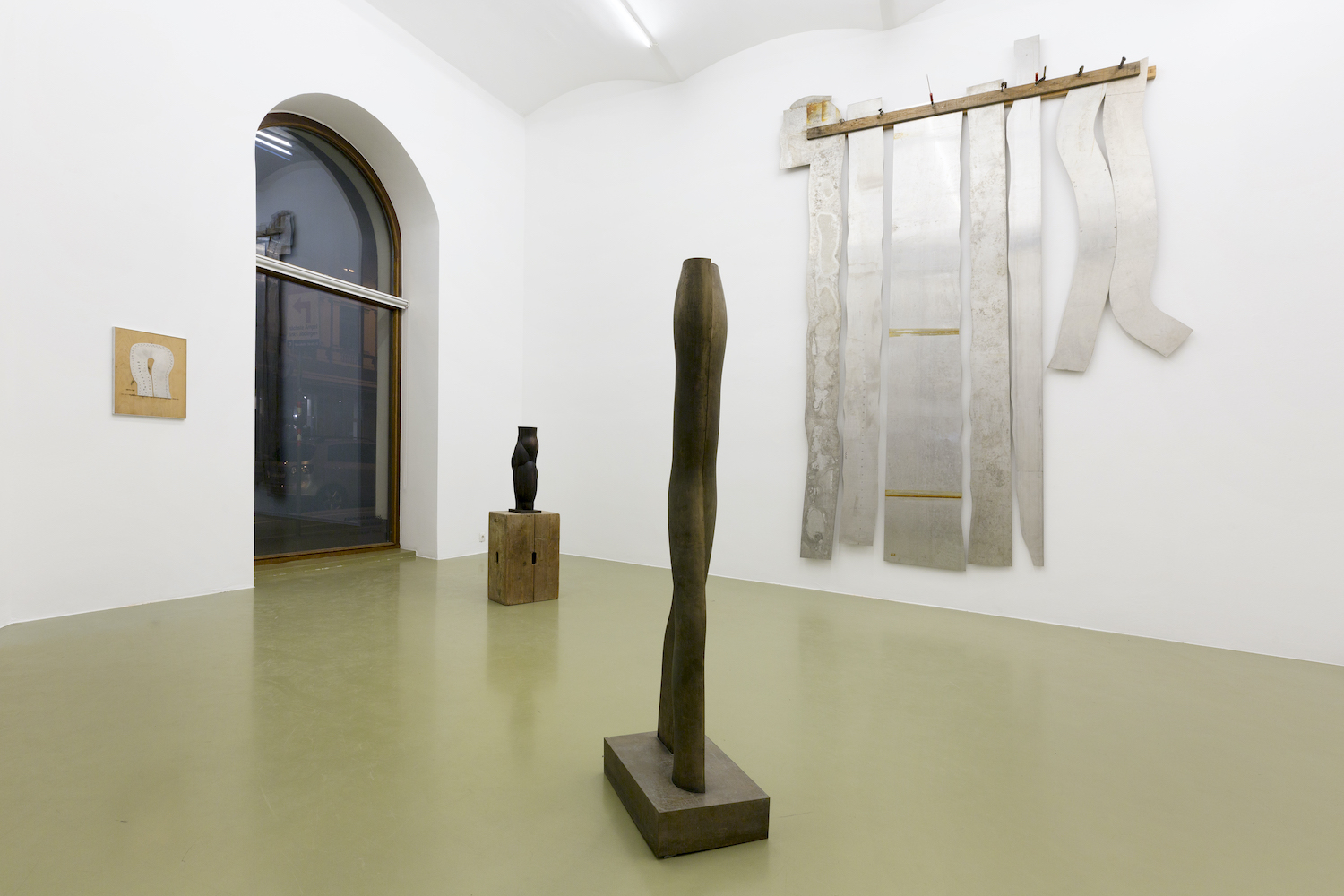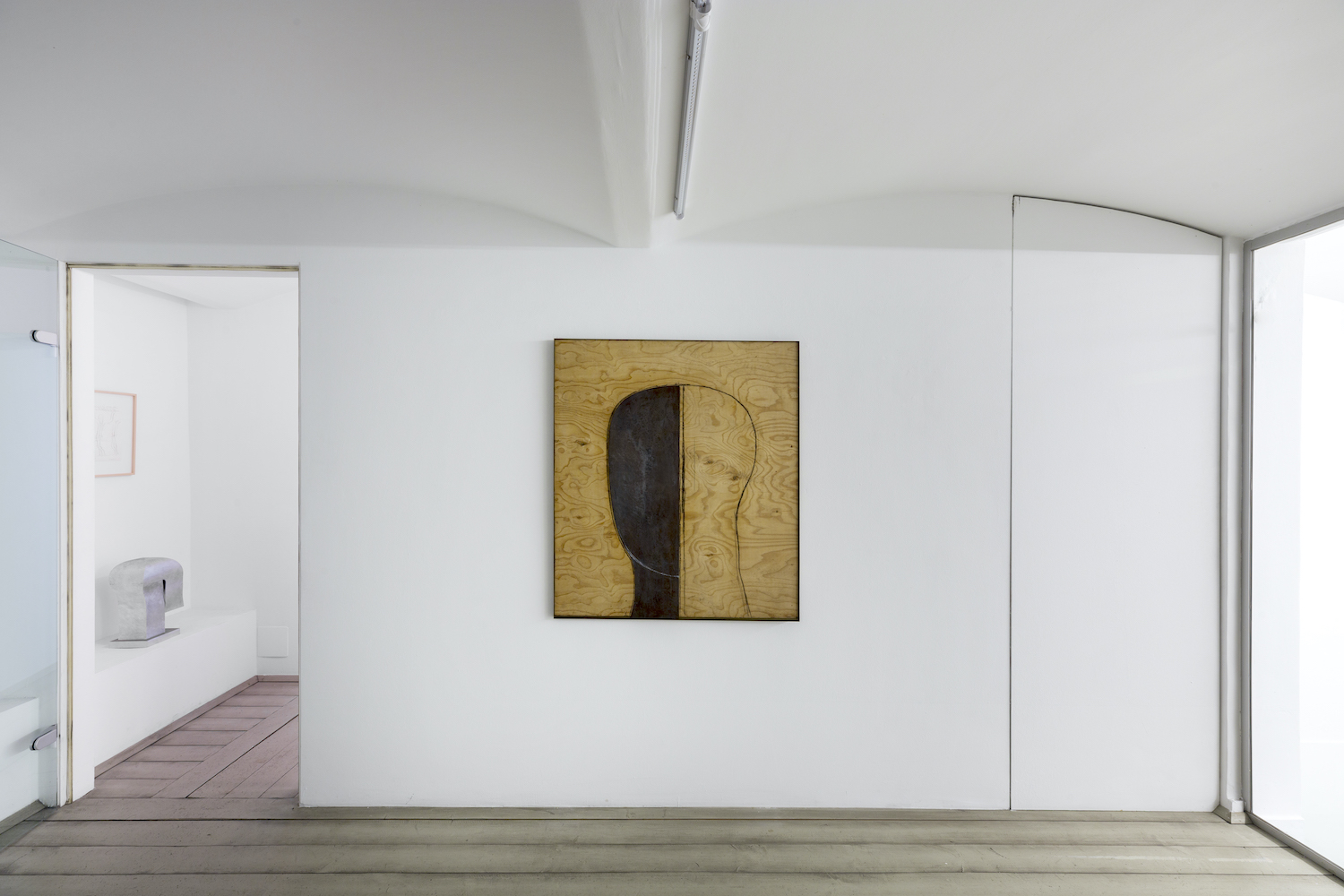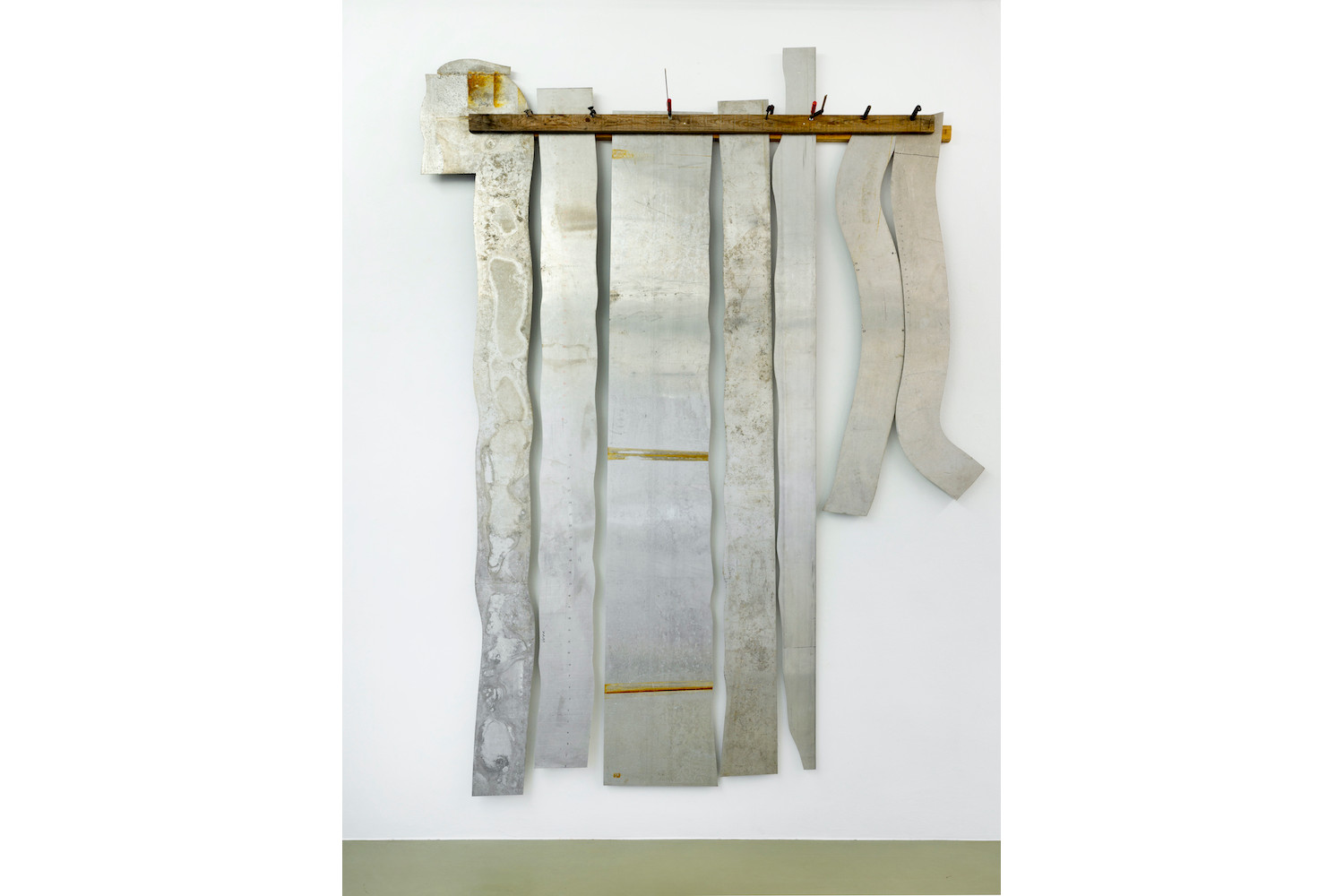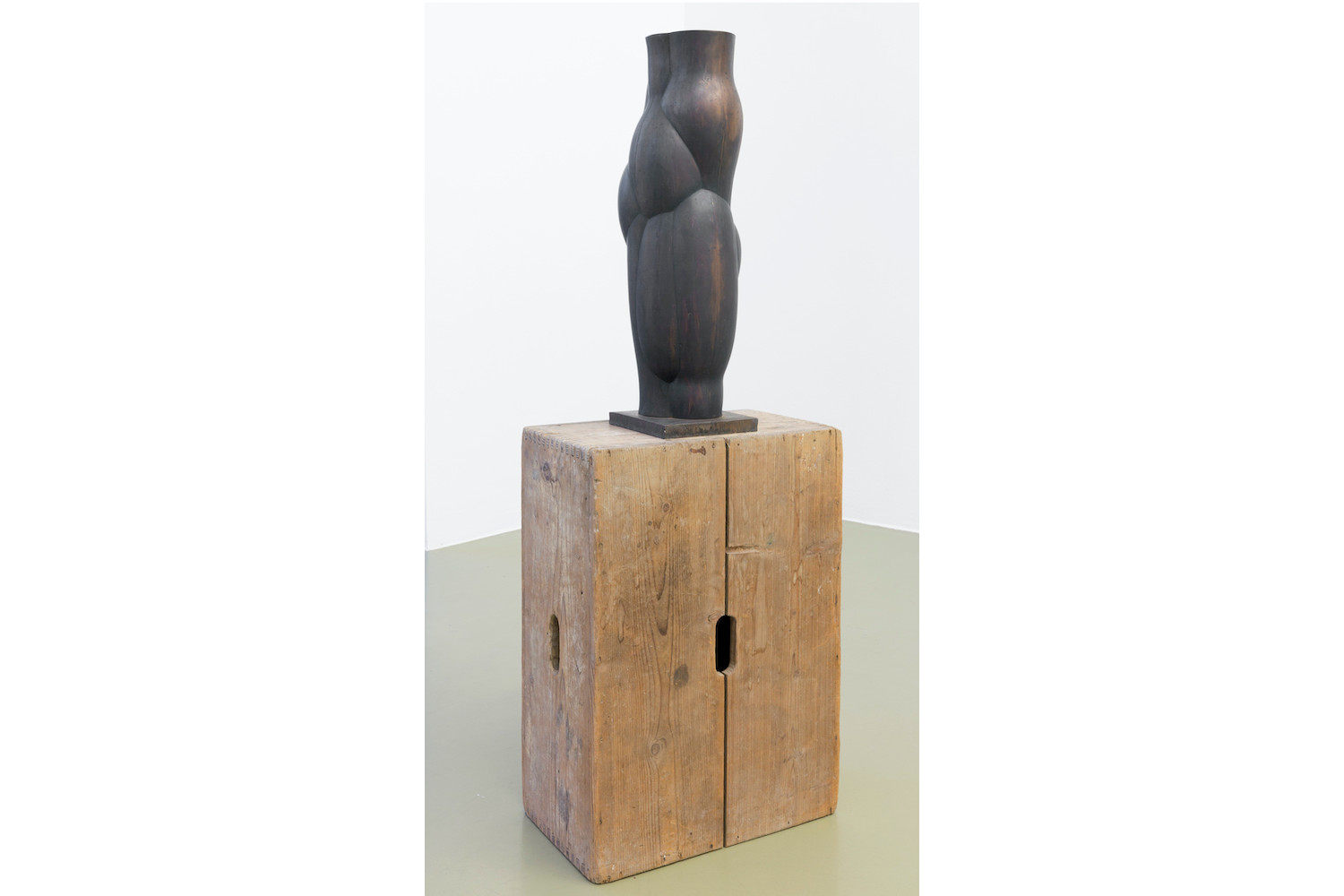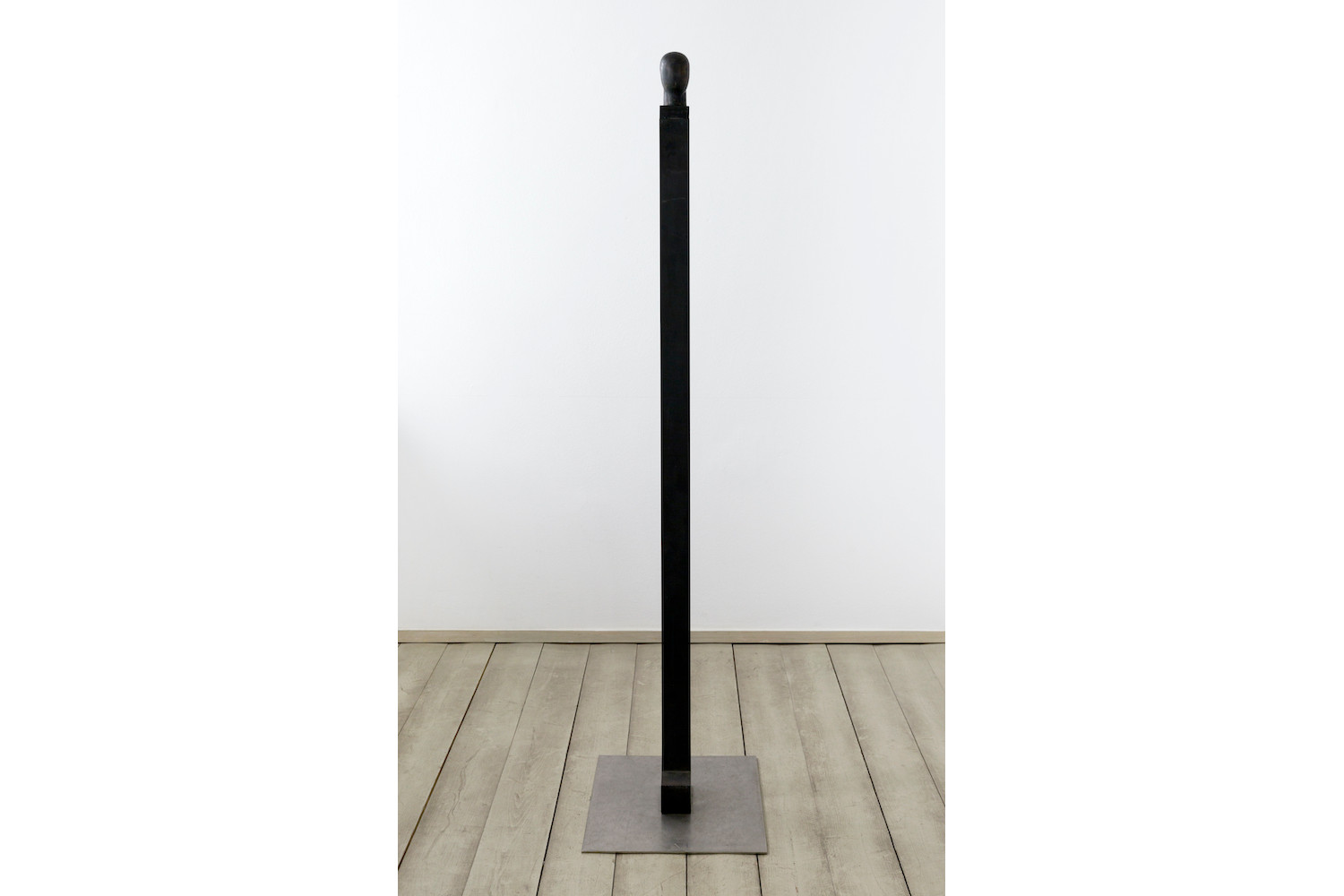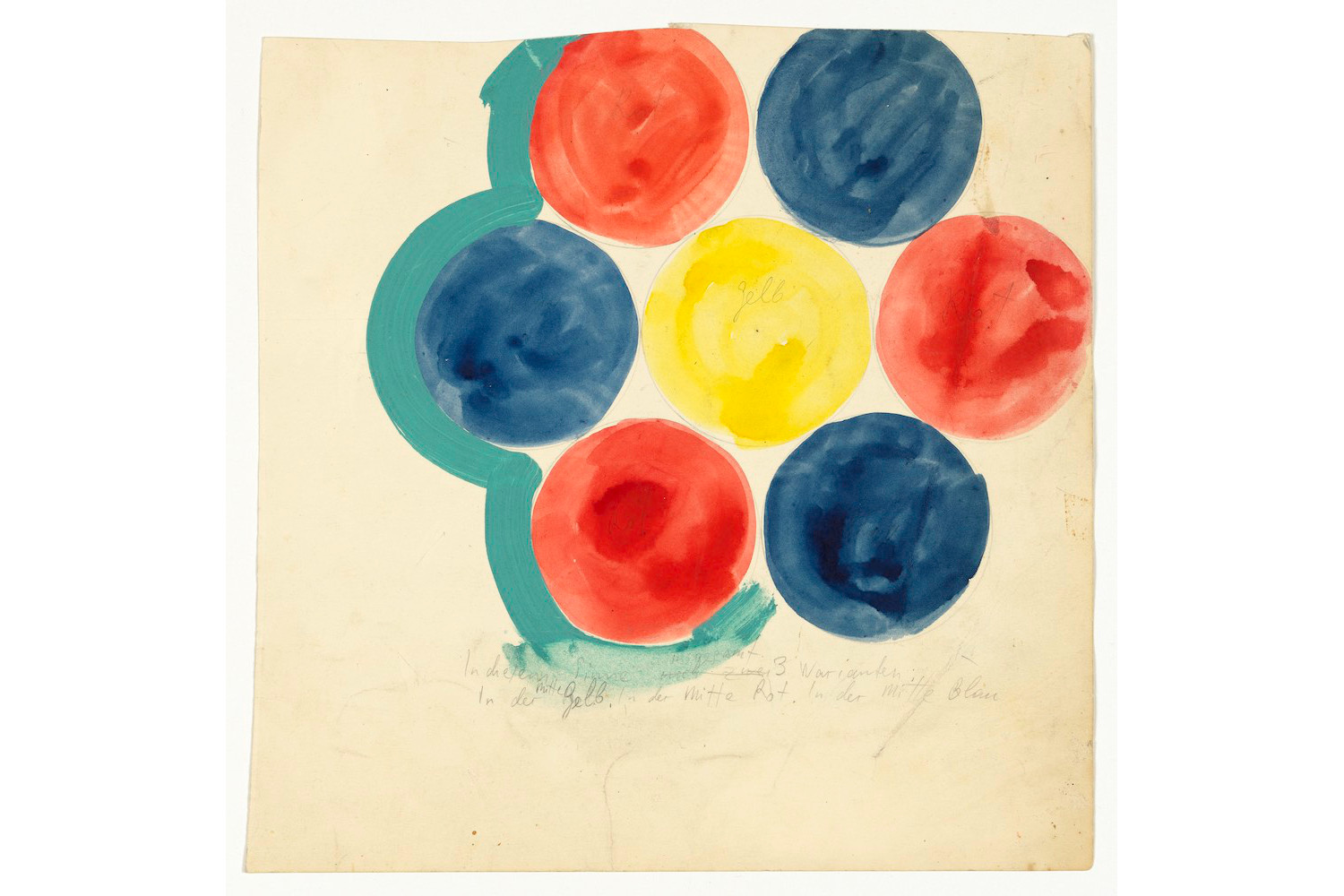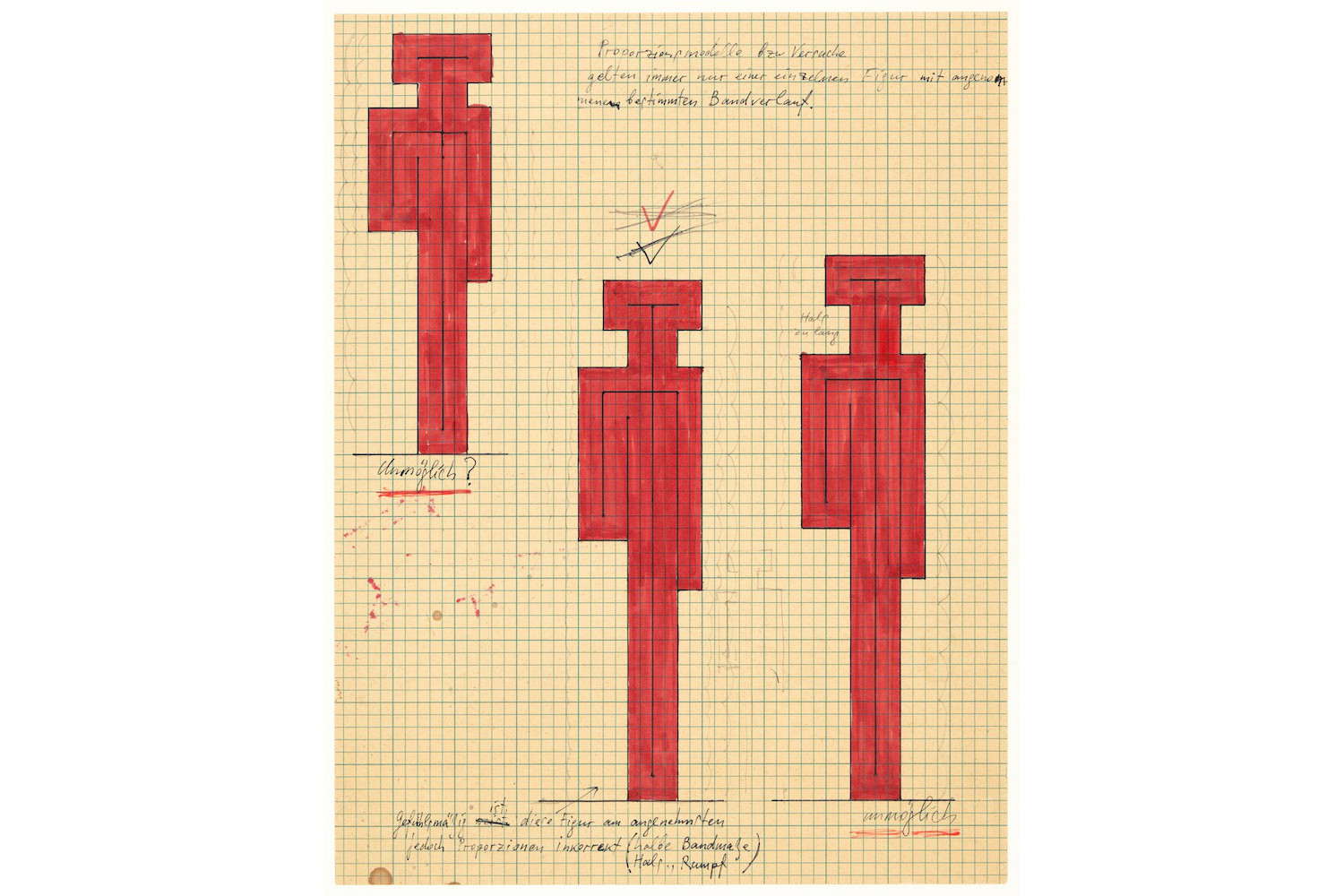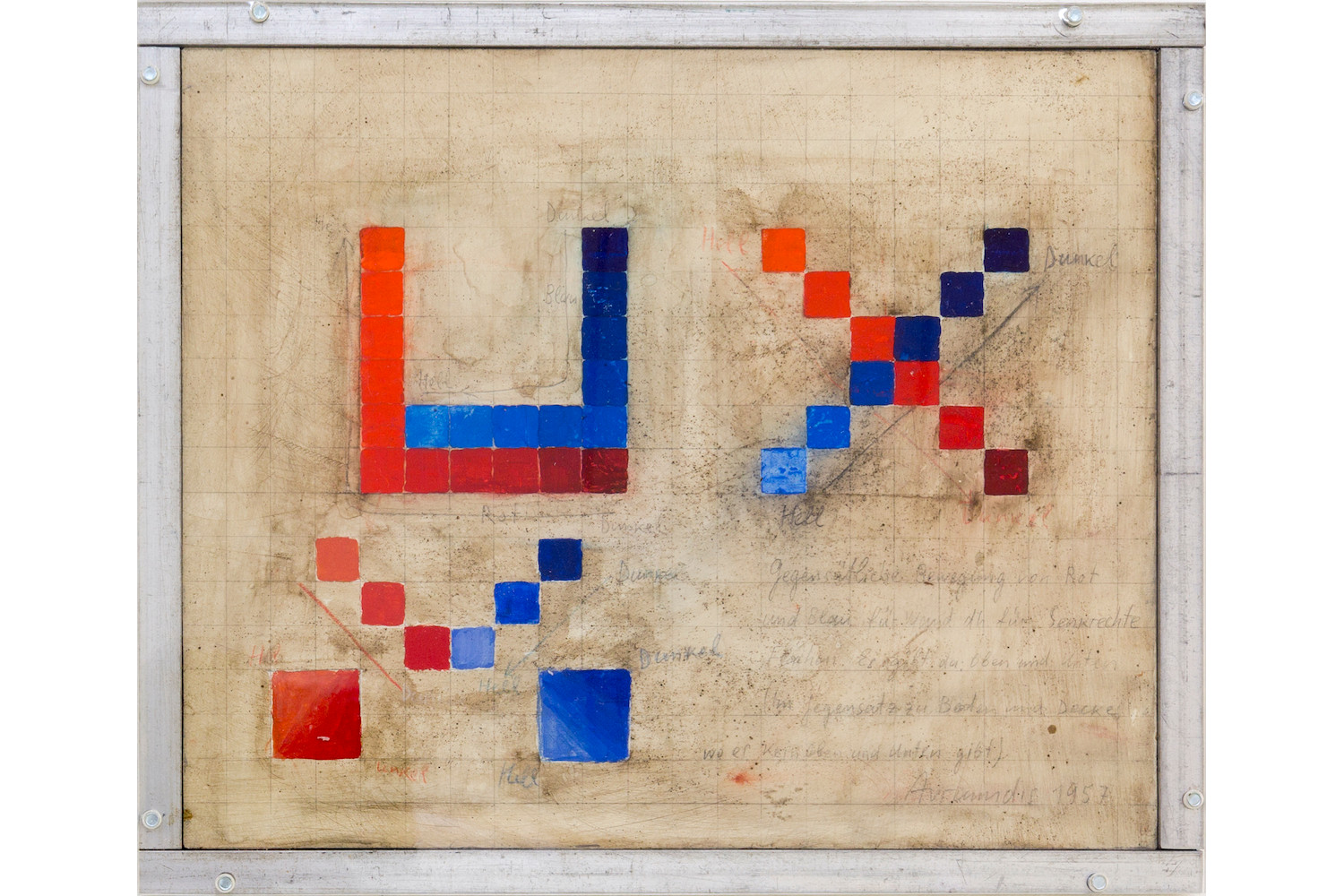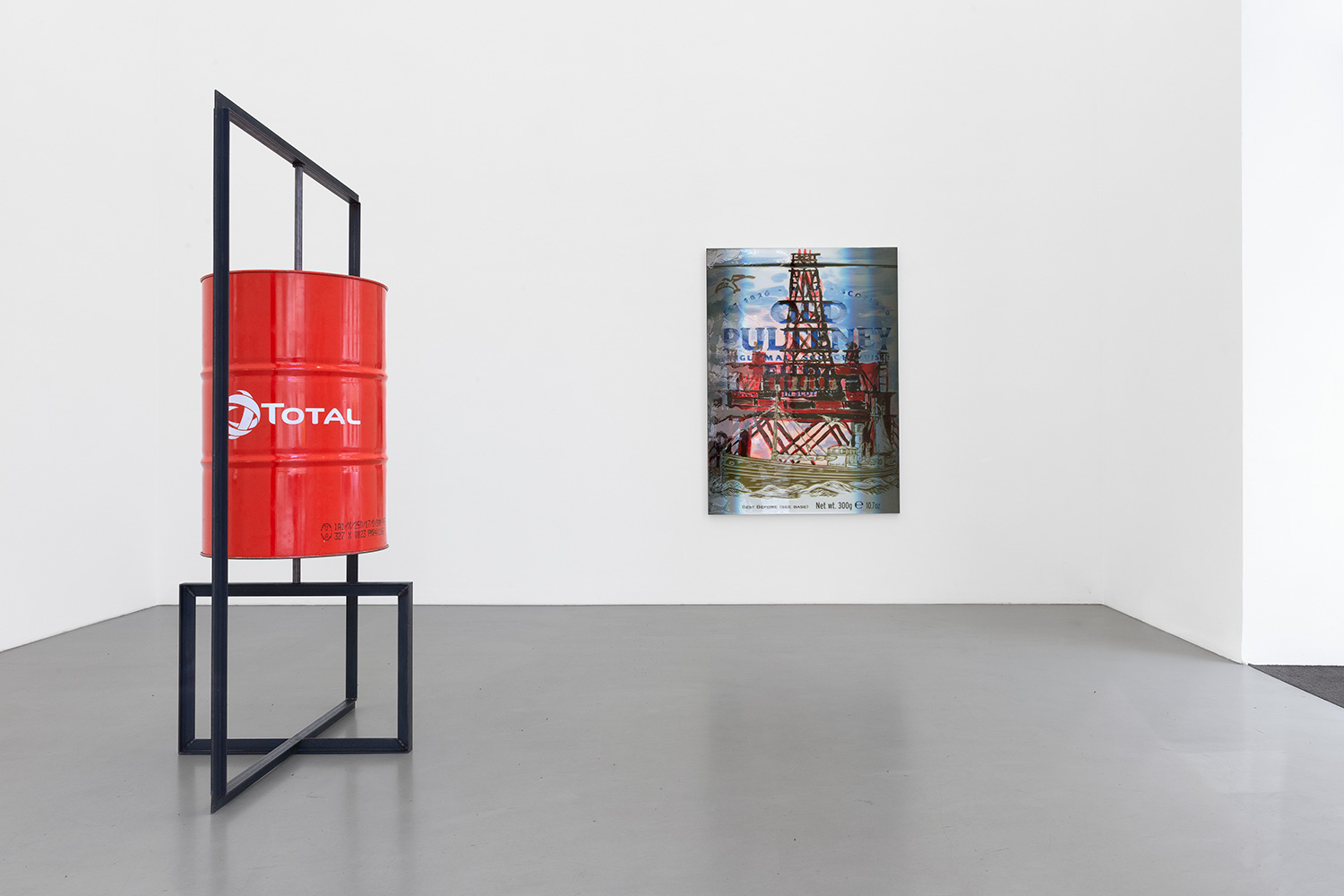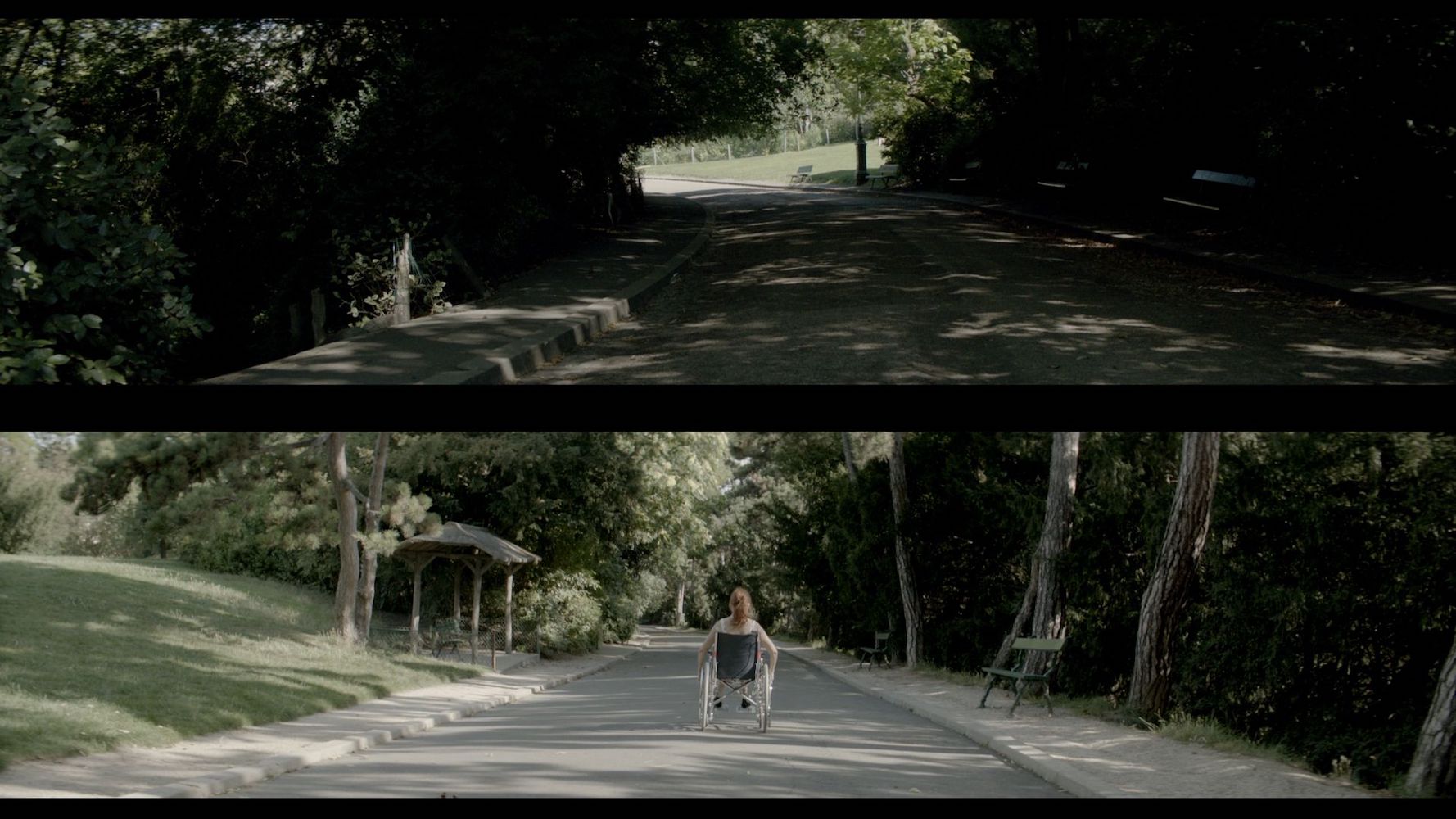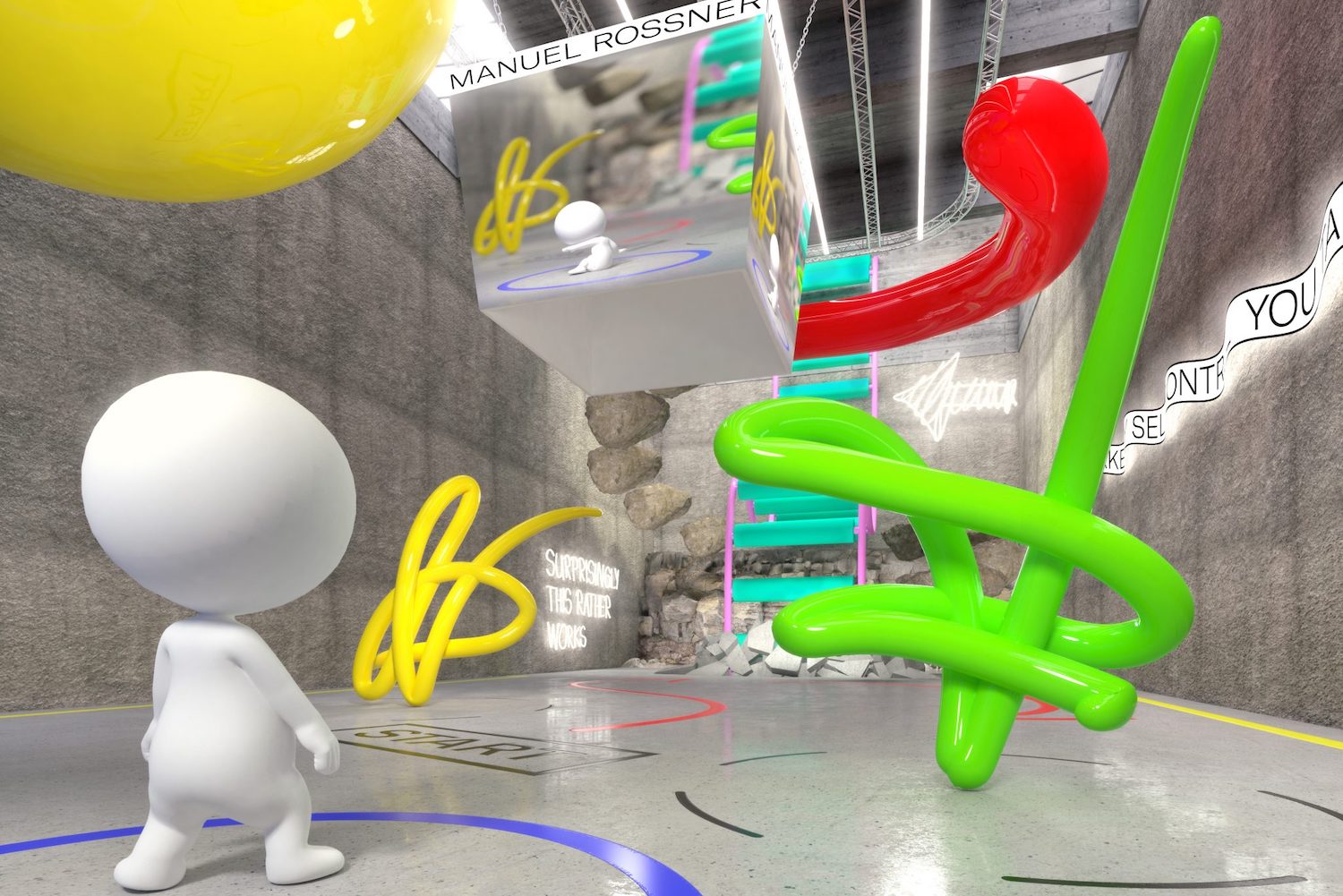The key to “Another Look” isn’t where you’d expect. It’s not bronze sculptures Sitzende Bandfigur (Rundprofil) (1983), Schreitender (Halbprofil) (1966/99), or Halbtorso (1962), austere studies of the human body standing calm in the crisp light of the main gallery space. Nor will you see it opposite them, in Installation aus Mittelprofilen (2002/3), seven huge aluminum slabs fixed to a wooden beam by metal clamps like ancient measuring tools warped by time. Nor still is it in Sitzende Bandfigur (Klein) (1970/82), an abstraction that shares Rundprofil’s basic line, only smaller and flatter, placed on a plinth in the anteroom next to the stairs.
It is, rather, in Gebäude in Form eines Kreuzes, Orthogonales Kreuz, Entwurfszeichnung (1968). This pen drawing is tucked away in the office upstairs, but it is far more significant than this placement suggests. It shows two cross shapes drawn on graph paper, though it’s less straightforward than that. The one on the left transforms the shape of a classic, unadorned Latin crux immissa into an octagonal construction surrounded by red felt pen coloring like a protective wall for its outside edges. The one on the right suggests that the choice of shape is no coincidence. This one expands the red area and adds an extra crossbeam that hooks up and around the structure like a meander. It looks like a plan for a labyrinth, but you can’t simply abstract away from the shape’s connotations, even if there’s no explicit religious content.
Gebäude in Form, like the twenty-four other drawings, notes, and plans placed on the walls around each sculpture, featuring various crosses, quincunxes, and circles on graph paper, allows us to link Avramidis’s life to his mature visual language. “Another Look” is then like a miniature museum show, perhaps even a response to the 2017 retrospective at the Leopold Museum.
Avramidis was of Pontic Greek origin; he ended up in Austria — becoming one of its heroes of sculpture, no less — only after Stalin’s ethnic cleansing forced his family out of Georgia, and the Nazis deported him to Vienna from Athens. What we see in “Another Look” is, then, not only a sculptural practice balancing abstraction and figuration, but symbolism that bridges that of the western and eastern churches sublimated into new ways of thinking about human bodies. Each one is a proposition about how human beings could look or seem or really be — abstract enough to suggest humanity in general but specific enough not to force individual bodies to fit the mold of some abstract monotheistic standard.
The works in the main gallery space show the final result of this approach. These figures never transcend humanity. The viewer can point to something that looks like someone sitting on a stool, posing, or left alone in Sitzende Bandfigur (Rundprofil). Or, as the title would suggest, we see a half-torso in Halbtorso. What may or may not be visible musculature implies a well-proportioned, functioning human body, but we can just as easily imagine it with another version of itself on top in a tower-like formation going on infinitely.

